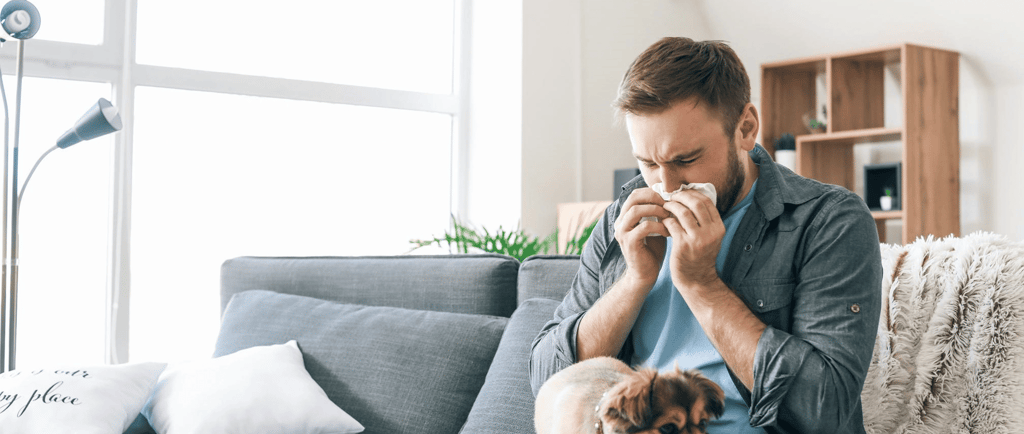What should I do if I am allergic to my dog?
Learn strategies to manage dog allergies effectively while maintaining a loving relationship with your canine companion.
4/15/20242 min read


Discovering that you're allergic to your dog can be devastating, especially when they're not just a pet but a member of your family. However, many people successfully manage their allergies and continue to live happily with their canine companions. This text will explore how you can minimise your allergy symptoms and maintain a loving relationship with your dog.
Understanding your allergy
Allergies to dogs are usually triggered by proteins found in the pet's dander (dead skin cells), saliva, and urine. These allergens can cling to furniture, clothing, and even float in the air, making it essential to address them directly.
Creating an allergen-free zone
One effective strategy is to establish an "allergy-free" zone, ideally in the allergy sufferer’s bedroom. Keep this area off-limits to your dog and use a HEPA air purifier to keep the space clear of allergens. Additionally, cover mattresses and pillows with allergen-proof covers to reduce exposure while you sleep.
Regular grooming and cleaning
Bathing your dog weekly can reduce allergens in their fur and dander. Use pet-friendly shampoo and have someone without allergies do the bathing if possible. Regular grooming outside the home can also help. Additionally, maintain a clean living environment by frequently dusting and vacuuming with a HEPA filter vacuum. Washing pet bedding and any fabric your dog comes into contact with can also reduce allergens.
Managing symptoms with allergy medicine
There are several allergy medicines available to manage symptoms. Over-the-counter allergy pills and nasal sprays can relieve runny noses and itchy eyes. Prescription nose sprays may be necessary for severe reactions. Saline nasal sprays can gently clear nasal passages. Consult us at Airyn to determine the best allergy treatment for you.
Limiting exposure
Try to minimise the amount of time your dog spends on upholstered furniture and carpets, which can trap allergens. Opt for easily cleaned surfaces where possible and use air cleaners to reduce airborne dander. After interacting with your dog, wash your hands and change clothes to avoid spreading allergens around your home.
Testing and hypoallergenic breeds
Before making any decisions, it's wise to get tested by an allergist to confirm that your dog is the cause of your allergies. Interestingly, there's no breed of dog that's completely hypoallergenic. However, some breeds might shed less or produce fewer allergens, so spending time with various breeds could help you identify one that doesn't trigger your symptoms as much.
Conclusion
Discovering that you are allergic to your dog can be challenging. However, it does not necessarily mean that you will have to find them a new home. With the right combination of cleaning, grooming, allergy medicine, and environmental controls, many people find that they can manage their symptoms effectively. The key is to find a balance that allows you to enjoy the companionship of your furry friend while keeping your allergies in check.
Join our waiting list today to be the first to know when we launch, and get a 50% discount off your consultation fee.
